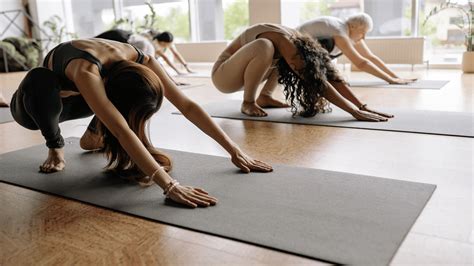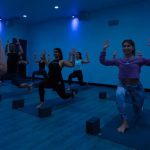Unlocking Inner Peace: How Yoga Practices Reduce Stress and Improve Well-Being
Introduction
In today’s fast-paced world, stress has become an unavoidable part of daily life. Yoga—a practice with roots in ancient India—offers a holistic solution for reducing stress and fostering well-being. Beyond mere physical exercises, yoga integrates mental, emotional, and spiritual dimensions, providing a toolkit to handle life’s challenges. This article explores various yoga practices that target stress relief, blending historical insights, current research, practical applications, and ethical considerations. Whether you are new to yoga or a seasoned practitioner, this guide offers actionable strategies to ease your stress today and sustain well-being in the long run.
Key Concepts
- Asanas: Physical postures designed to improve flexibility and body awareness.
- Pranayama: Breathing techniques that regulate the nervous system and promote relaxation.
- Meditation: Mindfulness practices that calm the mind and reduce emotional turbulence.
- Yoga Nidra: A state of deep relaxation, often referred to as “yogic sleep.”
- Parasympathetic Activation: A physiological state induced by yoga that helps counteract stress.
Historical Context
Yoga has evolved over thousands of years, from ancient spiritual traditions in India to a modern global practice. Originally mentioned in the Rigveda and later expanded upon in the Yoga Sutras of Patanjali, yoga was developed to foster spiritual enlightenment and personal growth. In the 20th century, pioneers like Swami Vivekananda and T. Krishnamacharya introduced yoga to the West, emphasizing physical as well as mental health benefits. This shift laid the foundation for today’s stress-management practices through yoga.
Current State Analysis
Incorporating yoga into mental health routines has become mainstream, with studies linking it to reduced cortisol levels, improved heart rate variability, and better emotional regulation. Many healthcare providers now recommend yoga as a complementary therapy for anxiety, depression, and chronic stress. However, inconsistent training among yoga instructors and commercialized practices have created accessibility barriers for some individuals.
Practical Applications
- **Beginner Sequence for Stress Relief**: Child’s Pose (Balasana), Cat-Cow Stretch, and Legs-Up-the-Wall (Viparita Karani) calm the mind and gently stretch the body.
- **Breathwork Techniques**: Nadi Shodhana (Alternate Nostril Breathing) balances the nervous system, while 4-7-8 breathing slows heart rate and reduces anxiety.
- **Meditation Practices**: Body scan meditation or mindful breathing encourages awareness of stress triggers and cultivates emotional resilience.
- **Evening Routine**: Incorporating yoga Nidra before sleep can lead to improved sleep quality and help release accumulated stress.
Case Studies
| Case Study | Results |
|---|---|
| Corporate Wellness Program | Employees who practiced yoga experienced a 35% reduction in perceived stress over six months. |
| School Yoga Intervention | Students reported improved focus and lower anxiety levels after participating in a 12-week yoga program. |
| Veterans with PTSD | A clinical trial found that yoga helped veterans manage PTSD symptoms by improving emotional regulation. |
Stakeholder Analysis
- Healthcare Providers: Use yoga as an adjunct to conventional therapies for mental health treatment.
- Corporations: Offer workplace yoga programs to boost employee productivity and well-being.
- Educational Institutions: Integrate yoga into curricula to promote student mental health.
- Yoga Instructors: Ensure inclusive and accessible teaching practices.
Implementation Guidelines
- **Set Goals**: Determine if the primary focus is relaxation, emotional well-being, or physical fitness.
- **Choose the Right Style**: Select a yoga style—such as Hatha for beginners or Vinyasa for dynamic movements—based on individual needs.
- **Develop a Routine**: Consistency is key; practice yoga 3-5 times a week for optimal results.
- **Adapt for Accessibility**: Provide modifications for individuals with physical limitations.
Ethical Considerations
While yoga offers immense benefits, cultural appropriation remains a critical issue. Practitioners must respect yoga’s roots and avoid distorting it into mere fitness routines. Furthermore, ensuring inclusivity in yoga spaces—welcoming people of all body types, abilities, and backgrounds—is essential.
Limitations and Future Research
Despite growing evidence, more research is needed to understand the long-term effects of yoga on mental health across diverse populations. Future studies should focus on developing standardized yoga interventions and investigating their efficacy compared to other stress-reduction techniques. Additionally, exploring the role of technology—such as virtual yoga classes—in enhancing accessibility will be crucial.
Expert Commentary
Experts emphasize that yoga is not a one-size-fits-all solution but rather a complementary tool to enhance overall well-being. Dr. Jane Stevens, a mental health researcher, highlights that combining yoga with psychotherapy can yield profound results. Meanwhile, yoga instructors advocate for a personalized approach, advising individuals to listen to their bodies and tailor practices to their needs.








